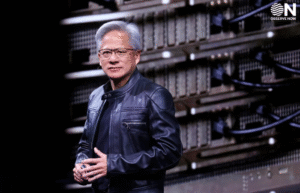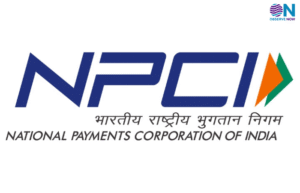As India is moving optimistically toward its ambitious goal of becoming a $5 trillion economy, the digital sector is also emerging as a critical growth engine. By 2025, it is anticipated that nearly half of the nation’s GDP will be impacted by digital technology, making strong, scalable, and effective digital infrastructure crucial. The backbone of seamless connectivity and the cornerstone of an interconnected future, Internet Exchange Points (IXPs) are among the unsung heroes of this digital revolution.
IXPS: THE HEARTBEAT OF THE DIGITAL ECONOMY
Internet Exchange Points serve as crucial hubs where internet service providers (ISPs), content delivery networks (CDNs), cloud providers, and other networks interconnect. By enabling direct interconnection between networks, IXPs significantly enhance the speed, efficiency, and reliability of data exchange, which are indispensable for powering a modern digital economy.
In a country like India characterised by its vast geography and diverse demographics, IXPs play a vital role in bridging the digital divide. They eliminate latency and the need for data to travel over long domestic or international routes by allowing local traffic to be exchanged locally. This improves user experience, lowers costs, and ensures that the Internet remains a powerful enabler of economic growth and social inclusion.
DRIVING CONNECTIVITY IN INDIA
India’s internet penetration has grown exponentially, with over 900 million internet users today and counting. However, delivering high-quality internet connectivity to every corner of the country remains a challenge. Here, IXPs come into play as a strategic solution. By decentralising traffic flow and bringing content closer to the end user, IXPs facilitate faster and more affordable access to digital services.
For instance, businesses leveraging IXPs benefit from reduced dependency on upstream providers and lower transit costs. This not only creates cost efficiencies for enterprises but also enables ISPs to pass on the benefits to end users, contributing to increased adoption of digital services across all economic strata.
ENABLING COST-EFFICIENT DIGITAL TRANSFORMATION
The digital economy relies on cost-efficient infrastructure to scale sustainably. IXPs are critical in achieving this by optimising the flow of data and reducing operational expenses for participating networks. By fostering a neutral and competitive environment, IXPs lower barriers to entry for smaller ISPs and startups, empowering innovation and entrepreneurship—two key drivers of economic growth.
Moreover, the cost savings facilitated by IXPs are reinvested in building next-generation networks and expanding digital services, aligning perfectly with the government’s vision of creating a robust digital ecosystem.
BOLSTERING INDIA’S DIGITAL INFRASTRUCTURE
A digitally thriving economy is built on a foundation of strong digital infrastructure, and IXPs are integral to this framework. They enhance network resilience by providing redundant routes for data traffic, ensuring minimal disruptions in an increasingly interconnected world. This resilience is critical as industries such as fintech, e-commerce, and health tech become more reliant on real-time data processing and secure digital communication.
Additionally, IXPs contribute to building a greener digital ecosystem. By optimising data routes and reducing long-haul traffic, they lower energy consumption and carbon footprints, aligning with global sustainability goals.
THE PATH AHEAD: SCALING IXPS FOR A $5 TRILLION ECONOMY
Strengthening Digital Infrastructure to Support Economic Growth
Efficient Data Routing: IXPs serve as critical hubs for routing internet traffic between networks, reducing the need for international bandwidth. This helps optimize local data traffic management, lowers operational costs, and boosts internet performance. Improved internet infrastructure, in turn, fosters the growth of digital businesses, e-commerce, and industries that depend on fast, reliable connections.
Driving Smart Cities and IoT: With a robust IXP network, India can support the growing demands of smart cities and the Internet of Things (IoT). Localized data exchange and processing reduce latency, driving the efficiency of urban infrastructure systems and contributing to overall economic productivity.
Enabling Digital Transformation Across Industries
Empowering Key Sectors: By improving interconnection through IXPs, industries like healthcare, education, fintech, and manufacturing can benefit from faster and more secure digital services. This accelerates the pace of digital transformation in these sectors, making them more competitive globally and creating high-value jobs, both of which are critical to reaching the $5 trillion economy target.
Enhancing Digital Supply Chains: IXPs facilitate faster and more efficient data exchanges between businesses, enhancing the speed of digital supply chains. This is especially critical in industries like logistics, retail, and pharmaceuticals, where agility and timely information are key drivers of success.
Improving Digital Inclusivity for Nationwide Growth
Bridging the Digital Divide: By deploying IXPs in underserved areas, digital infrastructure can be democratized, offering remote regions equal access to high-speed internet. This creates opportunities for local businesses and entrepreneurs to thrive, ensuring that economic growth is inclusive and felt across the country, not just in urban centers.
Supporting Rural Innovation: With easier access to digital tools, rural areas can engage in e-commerce, digital agriculture, and tech-based services. This provides a new avenue for rural economic development and job creation, driving India’s progress toward a $5 trillion economy.
4.Encouraging Innovation and Entrepreneurship
IXPs foster an environment where innovation can thrive. By lowering the barriers to entry for smaller ISPs, startups, and tech-driven businesses, IXPs create opportunities for new players to enter the market, driving innovation in digital services and solutions. This is crucial for India’s evolving tech ecosystem, providing a platform for entrepreneurial ventures to scale and compete globally..
CONCLUSION
The journey to a $5 trillion economy will be powered by the confluence of innovation, technology, and infrastructure. IXPs play a key role in coordinating this symphony of development by providing the speed, effectiveness, and connectivity required by India’s digital economy. As the Chief Business Officer of DE-CIX India, I firmly believe that by investing in and scaling our IXP ecosystem, we can accelerate India’s digital transformation and secure its position as a global leader in the digital economy.
The road ahead is challenging, but with IXPs as a cornerstone of our strategy, the vision of a digitally empowered India is not just a goal—it’s a promise waiting to be fulfilled.
Author: Sudhir Kunder, Chief Business Officer, DE-CIX India
Disclaimer: The views expressed in this article are solely those of the author and do not necessarily reflect the opinions or policies of ObserveNow Media. The author is solely responsible for ensuring the accuracy, completeness, and validity of the information presented, encouraging readers to independently verify and seek professional advice if needed.





























